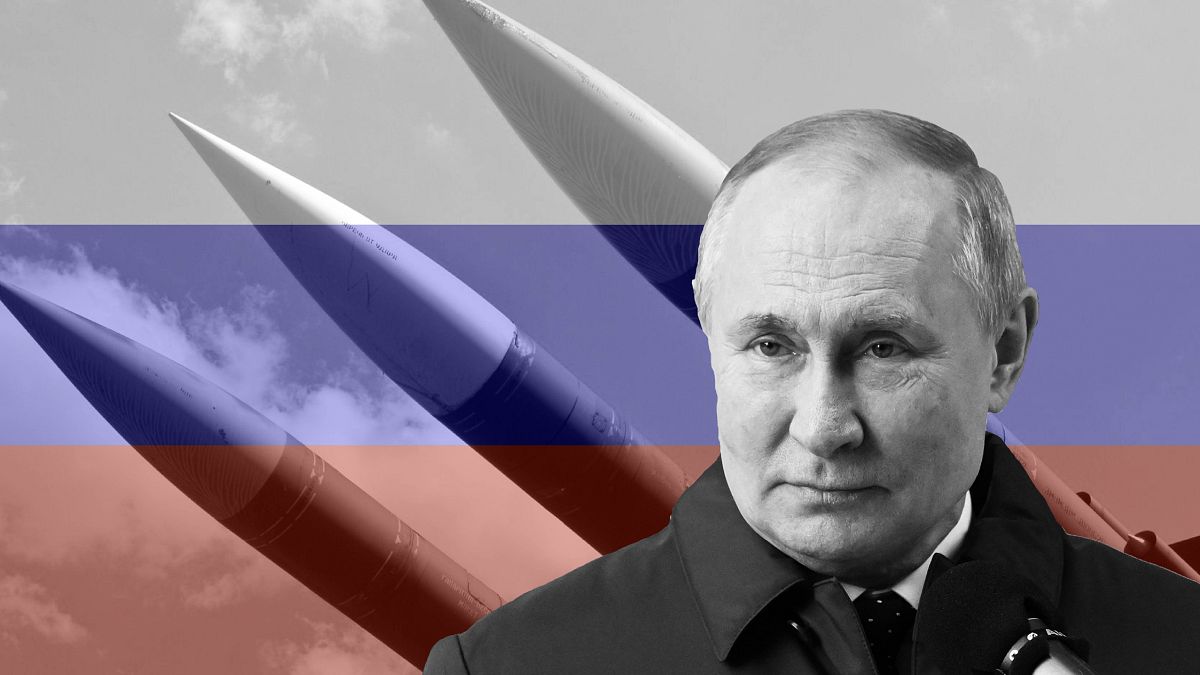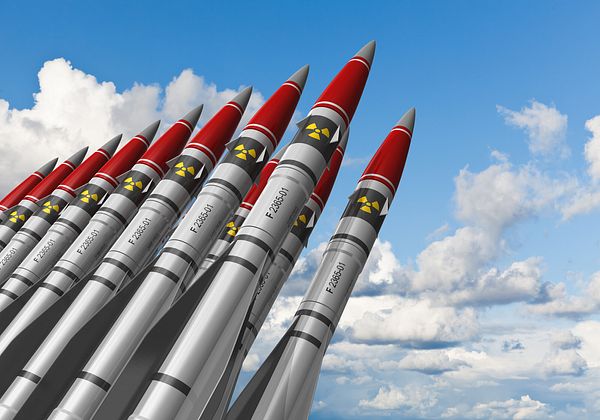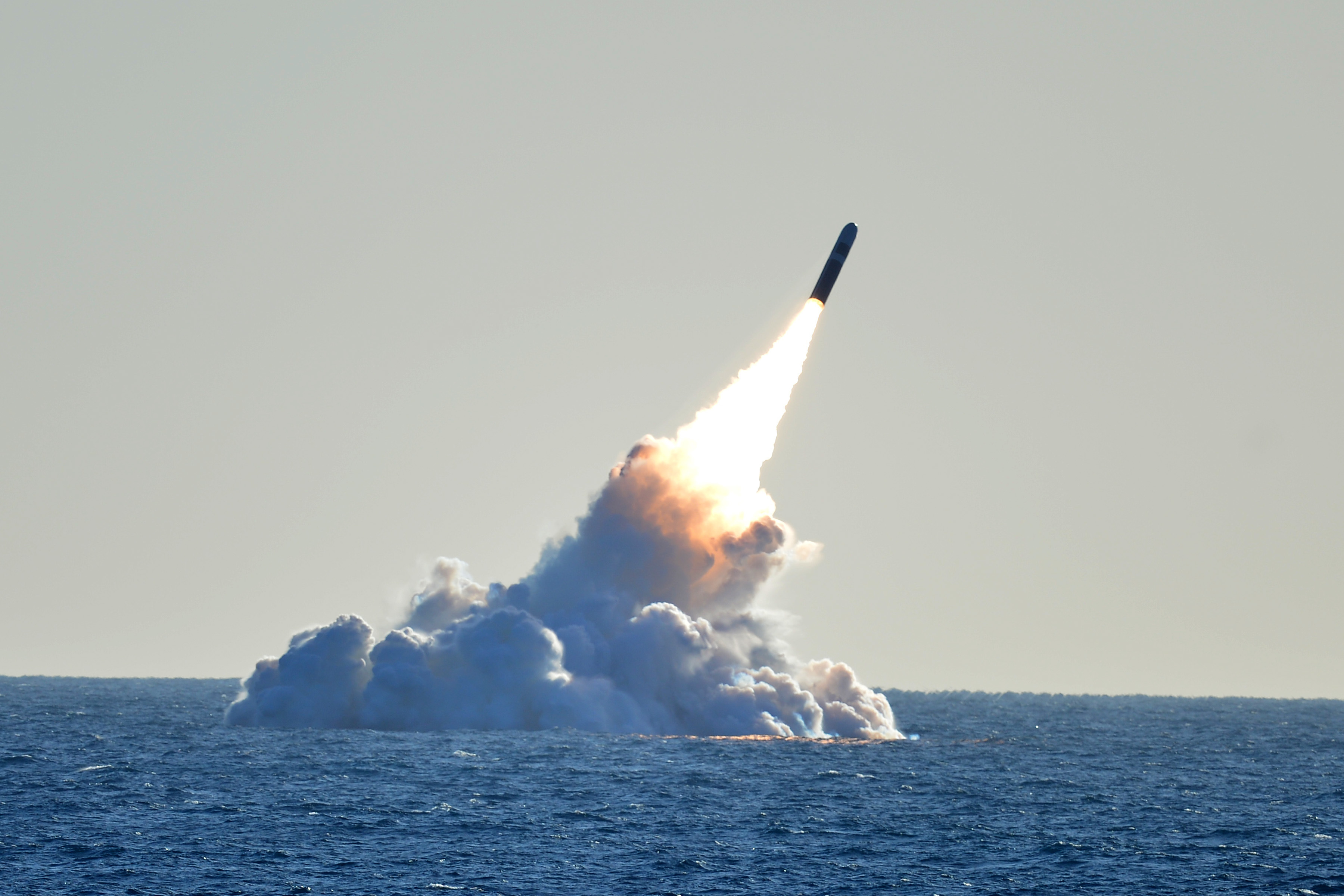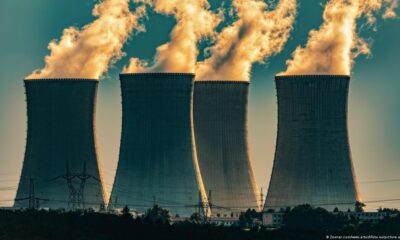News
Biden Sends B61-12 Tactical Nuclear Weapons to Europe
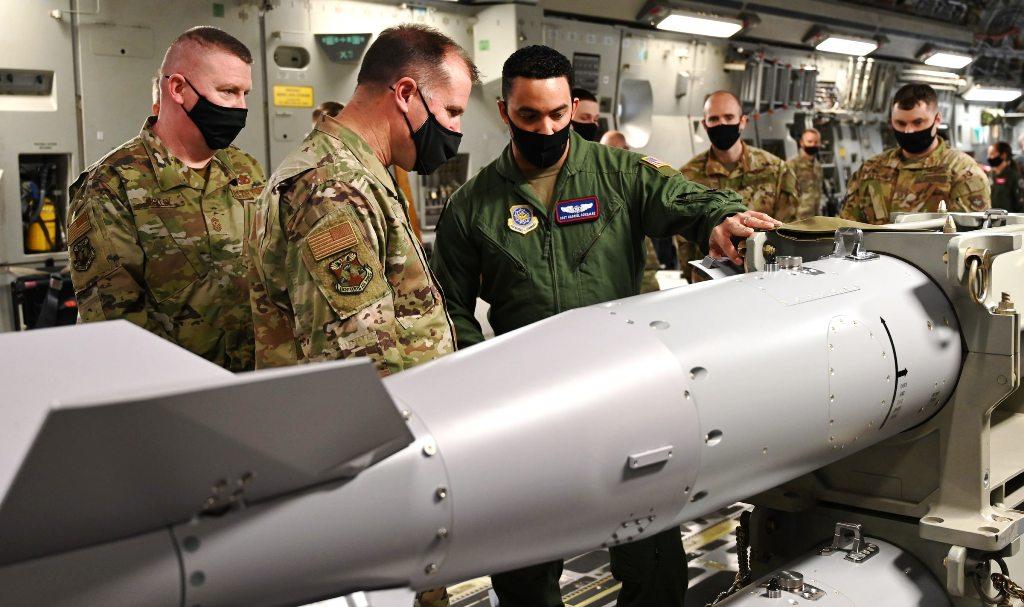
On Saturday, Russia’s Deputy Foreign Minister Alexander Grushko stated that the rapid deployment of updated US B61 tactical nuclear weapons at NATO facilities in Europe would lower the “nuclear threshold” and that Russia would factor the move into its military strategy.
Russia’s invasion of Ukraine had sparked the most serious clash between Moscow and Washington since the 1962 Cuban Missile Crisis when the two Cold War superpowers came dangerously near nuclear war.
Russia has approximately 2,000 operational, tactical nuclear weapons, whereas the US has approximately 200 such weapons, half located at facilities in Italy, Germany, Turkey, Belgium, and the Netherlands.
According to Reuters, the US told a confidential NATO meeting to speed the deployment of the B61-12, an upgraded variant of the B61, with the new bombs arriving at European locations in December, several months earlier than intended.
“We cannot ignore the intentions to modernize nuclear weapons, especially the free-fall bombs that are being deployed in Europe,” Russian Deputy Foreign Minister Alexander Grushko told reporters.
According to studies by the Federation of American Scientists, the 12-foot B61-12 gravity bomb has a lesser yield nuclear payload than many previous variants but is more accurate and can penetrate below ground.
“The US is updating them, boosting their precision and reducing the force of the nuclear charge, turning these weapons into ‘battlefield weapons,’ lowering the nuclear threshold,” Grushko explained.
The US begins production of its latest tactical nuclear weapons.
The Biden Administration unveiled a new defence strategy Thursday that puts the United States on a Cold War-era footing with China and Russia, outlining a plan to confront two nuclear peer adversaries for the first time in history with a multi-year build-up of modernized weaponry, strengthened foreign alliances, and a total overhaul of the American nuclear arsenal.
The 80-page book serves as the Administration’s plan for global security in the coming decades, stating unequivocally that the United States faces two formidable but very distinct competitors.
It sees China as a long-term “pacing challenge” because of its expanding military projection in the Pacific region, while Russia is an immediate “acute threat” because of its ongoing war with Ukraine and repeated threats to launch a nuclear strike.
“We deliberately chose the word ‘acute,'” Defense Secretary Lloyd Austin told reporters at the Pentagon. “Unlike China, Russia cannot long-term challenge the United States, but Russian aggression poses an urgent and severe threat to our interests and principles.”
In recent weeks, Russian missile assaults on civilian targets in Ukraine and unsubstantiated allegations of a pending “dirty bomb” detonation have fueled worries that the world is on the verge of nuclear Armageddon.
According to Austin, the Administration is deeply concerned about the conflict’s escalation, but it remains committed to providing Ukraine with weapons and the means to defend itself.
Russian President Vladimir Putin has often discussed the use of nuclear weapons in the eight-month-old conflict, and this week oversaw nuclear drills involving Russian submarines, bombers, and ballistic missile launches within Russia.
Austin dismissed suspicions that the war drills were a cover for a genuine nuclear assault, saying US intelligence had found no evidence of such preparations.
He said senior Russian officials had privately stated that there are no plans to use a nuclear bomb in Ukraine, but the US remained wary.
“It would be the first time in almost 70 years that a nuclear bomb has been used, so that certainly has the potential to change things in the world community,” Austin added. “We will continue to explain that any type of use of a weapon of that type, or even the discussion of such usage, is hazardous and irresponsible.”
Meanwhile, China is portrayed as the “most relevant strategic competitor for the future decades” in the strategic plan. According to the US, Beijing is actively working to undercut US alliances with Asian partners by strengthening its military and nuclear forces and threatening to invade the US-allied island of Taiwan.
“China is the only challenger out there with both the will and, increasingly, the power to remake the international system,” Austin said.
The Administration has concluded that Beijing intends to triple the number of nuclear weapons to 1,000 by 2030 while also building hundreds of additional silos capable of firing long-range ballistic missiles that hit the United States and its far-flung nuclear troops.
While the United States has a more than 10-to-1 edge over China regarding nuclear warheads and delivery systems, the Pentagon sees a need to prepare for the decades ahead.
The Chinese nuclear buildup is an unprecedented challenge for the military, which has only had to focus on deterring one near-peer adversary—formerly the Soviet Union, now Russia—from launching a nuclear assault since World War II’s end.
“I do not want to imply that this is a solved or closed situation and that we now have the answers,” a senior defence official who was not authorized to talk publicly on the subject told reporters.
“This is uncharted ground for us… How can you combat one opponent with enough reserves to keep the other at bay? And the second element of that cannot be a solution in which we need 2,000 nuclear warheads if China has 1,000 and Russia has 1,000 because that would be an arms race that no one wants to be in.”
More here: Inside America’s $100 Billion Mission to Modernize Its Aging Nuclear Missiles
Austin’s proposal departs significantly from President Joe Biden’s campaign commitment to diminish the role of nuclear weapons in US strategy.
There are hints toward disarmament, such as directions to stop developing nuclear-armed sea-launched cruise missiles, retire the heaviest gravity bomb in the US arsenal, the B83, and end the avowed strategy of keeping nuclear weapons as a “hedge against an unpredictable future.”
However, the big improvement that non-proliferation experts had hoped for has not occurred.
“It substantially maintains the nuclear deterrence strategy and posture, including capabilities added during the Trump Administration.” “It is unclear how it decreases the role of nuclear weapons as the President instructed,” says Leonor Tomero, Biden’s Deputy Assistant Secretary of Defense for nuclear and missile defence until October 2021.
“There is an urgent urgency to lower the risk of nuclear war, particularly when nuclear tensions are at their highest in years.”
According to Tomero, the hazards of miscalculation and unexpected quick escalation could lead to the use of nuclear weapons. “To avoid these dangers, these new threats necessitate clear solutions and effective efforts to adapt and reinforce deterrence,” she says.
Under a bilateral deal known as New START, the United States and Russia are currently limited in the number of strategic warheads and delivery systems until February 2026.
On the other hand, China is not a signatory to the pact and has shown no evidence of trying to rein in its nuclear weapons programs, raising concerns about whether further nuclear armament reductions by other countries will be achievable.
“There are repeated references to adjusting US posture in the future, which sets up a future Administration to increase the size of the arsenal or resume nuclear testing,” says Jeffrey Lewis, an analyst at the Middlebury Institute of Strategic Studies’ James Martin Center for Nonproliferation Studies.
The administration is particularly concerned about the growth of non-nuclear weapons systems, such as hypersonic missiles, and space-based and cyber capabilities.
The strategy calls for “creating enduring advantages,” which includes investments in the Defense Department’s people, changes in weapon-buying processes, and climate change preparation.
Other threats mentioned in the dossier include Iran and North Korea and “violent extremist organizations,” which is military lingo for terrorist groups.
The Biden team’s focus on Moscow and Beijing is consistent with the US national security complex’s aim to shift away from the Middle East’s quagmire of conflict and counter-terrorism operations and engage in Great Power competition.
Congress requires each administration to produce a new national defence policy every four years, and two versions are created: one secret and one public.
The strategy, unveiled on October 27, was the first time it incorporated the so-called Nuclear Posture Review and Missile Defense Review, which affected funding allocations for the following years.
“By weaving these documents together,” Austin explained, “we assist guarantee that the entire department is going ahead together and that our resources are aligned with our goals.”
World
Gangs In Haiti Launch Fresh Attacks, Days After A New Prime Minister Is Announced
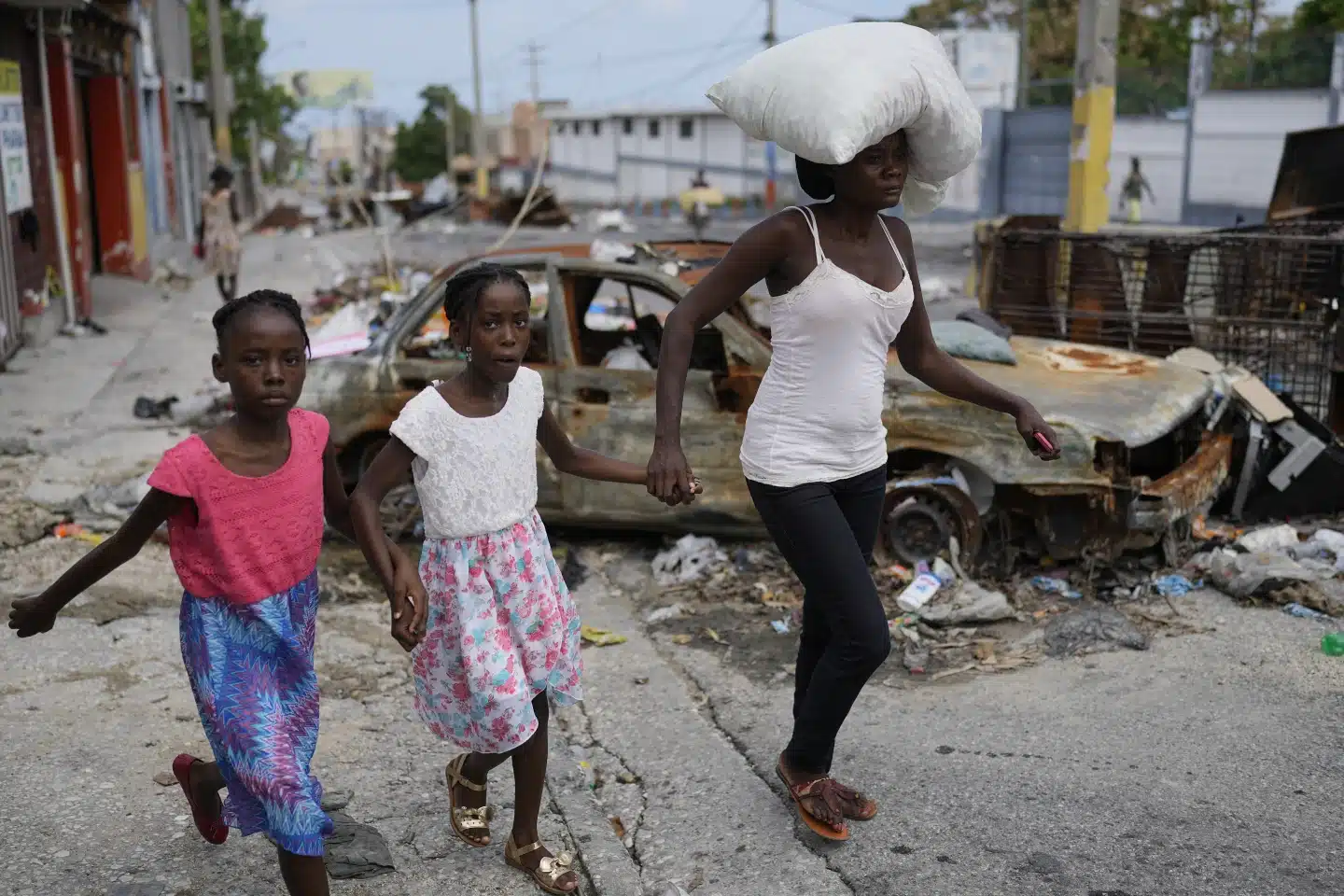
Port-au-Prince, Haiti – Gangs in Haiti besieged multiple districts in Port-au-Prince, burning homes and exchanging Gunfire with police for hours as hundreds escaped the mayhem early Thursday, in one of the most serious attacks since Haiti’s new prime minister was appointed.
The attacks began late Wednesday in communities such as Solino and Delmas 18, 20, and 24, southwest of the main international airport, which has been shuttered for over two months due to ongoing gang violence.
“The gangs started burning everything in sight,” said a man named Néne, who refused to disclose his last name due to fear. “I was hiding in a corner all night.”
AP – VOR News Image
Gangs In Haiti Launch Fresh Attacks, Days After A New Prime Minister Is Announced
He walked with a companion, carrying a dusty red bag crammed with clothes—the only thing they could preserve. The garments belonged to Néne’s children, whom he had whisked out of Delmas 18 in the morning during a lull in the battle.
The neighborhoods formerly bustling with cars and pedestrians were like ghost towns long after morning, with only the occasional bleating from a lone goat breaking the calm.
An armored police truck patrolled the streets, passing burnt vehicles and cinderblock walls with the scrawled “Viv Babecue,” a reference to one of Haiti’s most powerful gang bosses.
People who escaped the onslaught in Delmas 18 and other adjacent communities held fans, stoves, mattresses, and plastic bags packed with clothes as they left on foot, on motorcycles, or in colorful mini buses known as tap-taps. Others were walking empty-handed after losing everything.
“There were gunshots left and right,” claimed Paul Pierre, 47, who was walking with his girlfriend looking for safety after their house burned down. They couldn’t salvage any of their possessions.
He stated that the nocturnal battle ripped children from their parents and husbands from their wives as people fled in terror, adding, “Everyone is just trying to save themselves.”
Martina, a woman who refused to provide her last name out of fear, claimed she was left homeless after armed assailants burnt her home. She fled with her 4-year-old, who she claims attempted to flee when the shooting started late Wednesday.
“I told him, ‘Don’t be afraid. “This is life in Haiti,” she remarked as she held a hefty load of goods on her head, including butter, which she wanted to sell to generate money and find a new home.
AP – VOR News Image
Gangs In Haiti Launch Fresh Attacks, Days After A New Prime Minister Is Announced
When asked to describe what transpired overnight, she answered, “Gunfire, Gunfire, everywhere! Nobody slept. “Everybody was running.”
Jimmy Chérizier, the head of the formidable gang federation G9 Family and Allies and a former elite police officer known as Barbecue, was in charge of the area where the incident occurred.
He and other gang bosses have been blamed for the coordinated attacks that began on February 29 in the capital, Port-au-Prince. Gunmen have torched police stations, opened fire on the main international airport, and stormed Haiti’s two largest prisons, freeing over 4,000 inmates.
The attacks eventually forced Prime Minister Ariel Henry to resign, prompting the formation of a transitional presidential council. The council’s majority unexpectedly announced a new prime minister on Tuesday: Fritz Bélizaire, a former sports minister. The action threatens to split the nine-member council, which was sworn in last week.
As new authorities take over the country amid fighting, Haitians demand that they prioritize their protection, as gangs remain more strong and well-armed than the Haitian National Police.
More than 2,500 people were murdered or injured between January and March of this year, a more than 50% rise over the same period last year, according to the United Nations.
Meanwhile, over 90,000 individuals have fled Port-au-Prince in just one month, as gangs controlling an estimated 80% of the capital increasingly target formerly tranquil districts.
Ernest Aubrey told how he relocated to Delmas 18 years ago. He’s leaving home for the first time.
AP – VOR News Image
Gangs In Haiti Launch Fresh Attacks, Days After A New Prime Minister Is Announced
“It is too much. “We can’t resist any longer,” he said of the gangs. “They are taking everything we own.”
As he went with his heavy backpack, he noticed an acquaintance leaving in a car and dashed toward them to see if he could catch a ride.
Vanessa Vieux was one of the few who stayed at Delmas 18. Early Wednesday after the incident, she relocated her elderly mother to the countryside. She thought it was best not to give her home over to gangs. Furthermore, she has faith in Haiti’s National Police.
“I live next to a police officer,” she explained. “That’s why I’m not scared.”
SOURCE – (AP)
U.K News
Russia Proposes UN Resolution On Banning Weapons In Space, After Vetoing Similar UN-Japan Draft
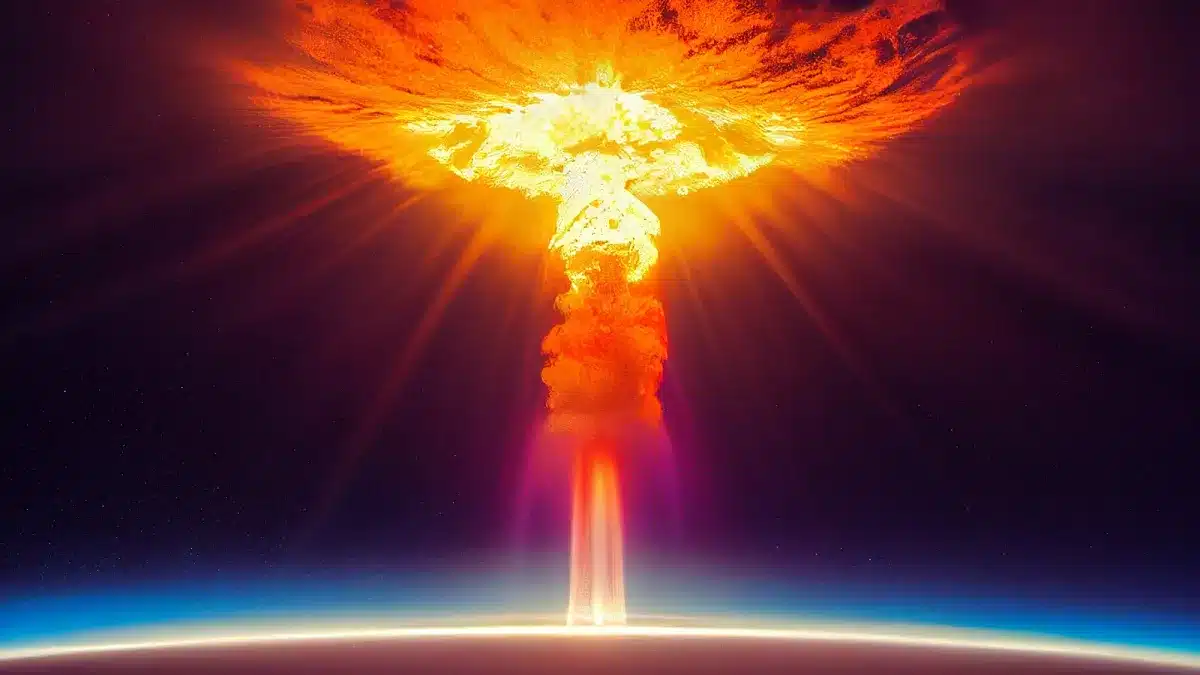
United Nations — A week after vetoing a U.S.-Japan resolution to halt an arms race in space, Russia circulated a UN resolution urging all countries to take immediate steps to prevent weapons from being placed in outer space “forever.”
The Russian draft resolution, goes beyond the U.S.-Japan plan by calling not only for steps to prevent weapons from being deployed in outer space but also for preventing “the threat or use of force in outer space,” “for all time.”
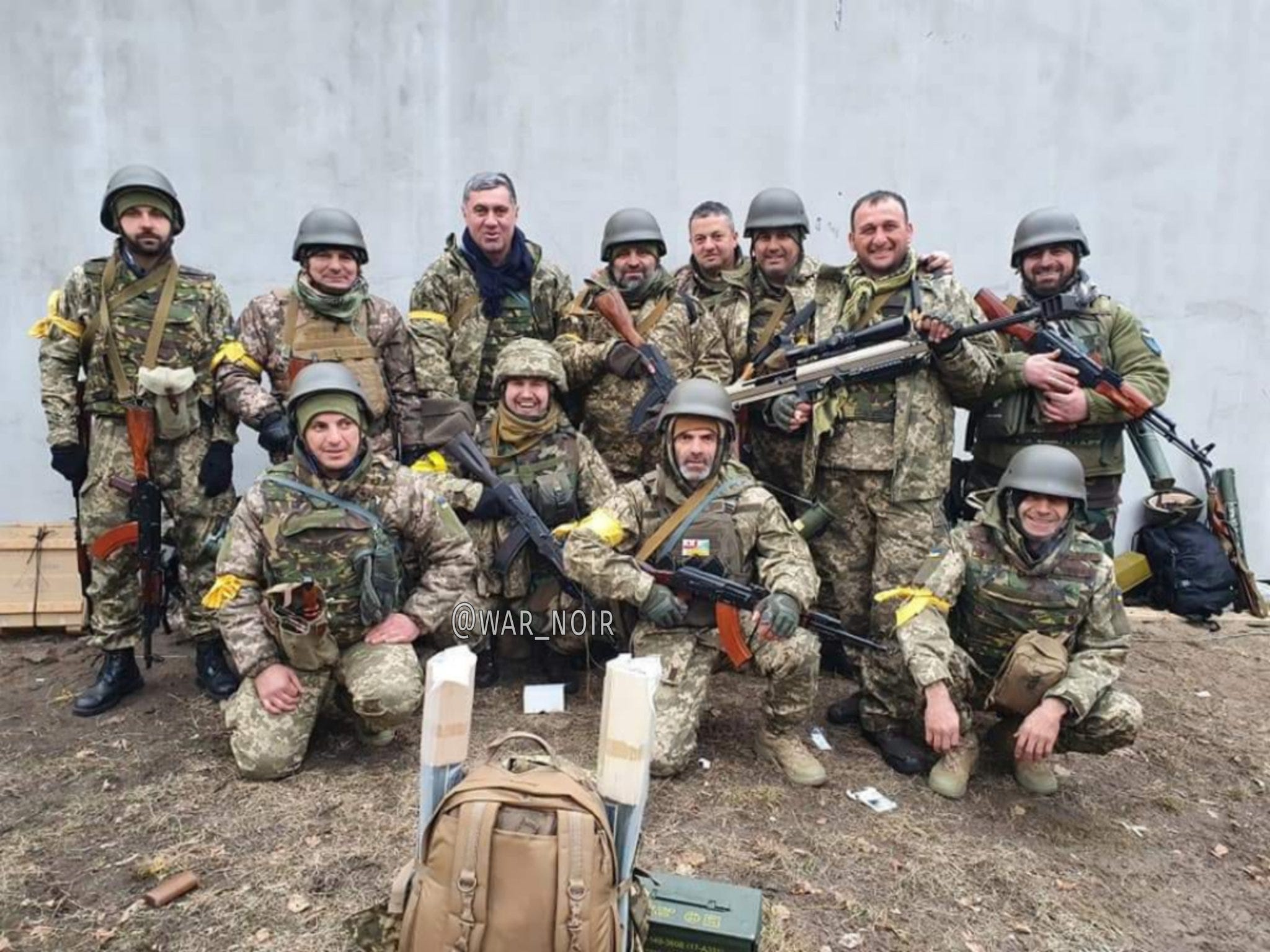
CNN – VOR News Image
Russia Proposes UN Resolution On Banning Weapons In Space, After Vetoing Similar UN-Japan Draft
It states that this should include deploying weapons “from space against Earth, and from Earth against objects in outer space.”
When Russia’s UN Ambassador Vassily Nebenzia rejected the United States-Japan draft, he warned the Security Council that it did not go far enough in outlawing all sorts of weapons in space.
The vetoed resolution only addressed weapons of mass destruction, including nuclear weapons, and made no mention of other weapons in space.
It would have urged all countries to refrain from developing or deploying nuclear weapons or other weapons of mass destruction in space, as prohibited by a 1967 international convention adopted by the United States and Russia, and to recognize the importance of verifying compliance.
Before the US-Japan resolution was voted on April 24, Russia and China presented an amendment calling on all countries, particularly those with space capabilities, “to prevent for all time the placement of weapons in outer space, and the threat of use of force in outer spaces.”
Seven countries voted in favor, seven against, and one abstention, and the amendment failed to receive the requisite nine “yes” votes in the 15-member Security Council.
Following the decision, US Ambassador Linda Thomas-Greenfield informed the council that Russian President Vladimir Putin has stated that Moscow has no intention of placing nuclear weapons in space.
“Today’s veto raises the question: why? Why, if you are obeying the rules, would you oppose a resolution that reinforces them? “What could you possibly be hiding?” she inquired. “It’s confusing. And it is a disgrace.”
AP – VOR News Image
Russia Proposes UN Resolution On Banning Weapons In Space, After Vetoing Similar UN-Japan Draft
Putin was responding to the White House’s revelation in February that Russia had acquired a “troubling” anti-satellite weapon capability, but such a weapon is not yet operational.
Vassily Nebenzia, Russia’s UN Ambassador, said after casting the veto that the US-Japan resolution cherry-picked weapons of mass devastation.
He emphasized that the US and its partners had already revealed plans to deploy weapons in outer space, which explains their activities.
Nebenzia also claimed that the United States has been opposing a Russian-Chinese proposal for a convention prohibiting the deployment of weapons in outer space since 2008.
Thomas-Greenfield accused Russia of undermining global treaties to prevent the spread of nuclear weapons, recklessly invoking “dangerous nuclear rhetoric,” abandoning several arms control obligations, and refusing to engage “in substantive discussions around arms control or risk reduction.”

The Sun – VOR News Image
Russia Proposes UN Resolution On Banning Weapons In Space, After Vetoing Similar UN-Japan Draft
Much of the Russian draft resolution is identical to the US-Japan text, including the wording aimed at averting an arms race in space.
It urges all countries, particularly those with significant space capabilities, “to actively contribute to the goal of the peaceful use of outer space and the prevention of an arms race in outer space.”
According to Thomas-Greenfield, the world is only beginning to realize “the catastrophic ramifications of a nuclear explosion in space.”
SOURCE – (AP)
News
Canada’s Trans Mountain Pipeline Starts Operations After 12 Years and $25 Billion

After 12 years and C$34 billion ($25 billion), Canada’s Trans Mountain pipeline expansion project (TMX) began commercial operations on Wednesday, a major milestone expected to transform access to global markets for the country’s producers.
Pipeline constraints have forced Canadian oil producers to sell oil at a discount for many years, but TMX will nearly triple the flow of crude from landlocked Alberta to Canada’s Pacific coast to 890,000 barrels per day (bpd).
For Canada, the world’s fourth-biggest oil producer, the additional pipeline capacity is set to boost crude prices, lift national gross domestic product and expand access to Asian oil markets.
Both TMX and the existing pipeline are now able to transport crude oil and the company has the ability to load cargoes from all three berths, Trans Mountain said in a press release, adding that 70% of the expanded pipeline is full by volume.
“Everyone has been waiting for this for literally years,” said Rory Johnston, founder of the Commodity Context newsletter. “It’s a fantastic thing for Canada and the Alberta oil patch.”
The expanded pipeline was first proposed by Kinder Morgan in 2012. The Canadian government bought it in 2018 to ensure the project got built despite opposition, but construction has been marred by regulatory delays and costs soaring to more than four times the project’s original budget.
“It is increasingly difficult to build pipelines in this country and it wouldn’t surprise me if this was the last pipeline,” Jon McKenzie, CEO of oil, said on an earnings call. The Canada Energy Regulator (CER) granted the final permits for the expansion project on Tuesday, clearing the way for the pipeline to start operating.
Trans Mountain Pipeline will boost Canada’s oil export capacity
Trans Mountain Corp said May 1 marks the commercial commencement date for the project, and tankers will be able to load at Westridge Marine Terminal in the Port of Vancouver by mid-May.
TMX will substantially boost Canada’s oil export capacity and could help shrink the discount on benchmark Canadian heavy crude, currently around $13.50 a barrel below U.S. crude, to less than $10 a barrel, analysts at RBC Capital Markets said in a note to clients.
Asian buyers are already showing interest.Reliance Industries bought 2 million barrels of Canadian crude from Shell for July delivery, marking the Indian refiner’s first oil purchase from TMX, Reuters reported.
For Ottawa, the project’s completion comes as a relief. Prime Minister Justin Trudeau’s Liberal government was slammed by environmental campaigners for buying the pipeline in the first place, and has drawn sharp criticism during construction for spiralling costs.
Green groups worry about the pipeline’s potential to leak in pristine areas and its expansion of carbon-intensive oil sands crude. Climate activists warn increasing oil and gas production risks hamstringing Canada’s efforts to cut carbon emissions.
“Trudeau made the decision to purchase this gift for the fossil fuel industry, but it’s these communities and ecosystems that will pay the price when the Trans Mountain pipeline inevitably spills,” said Peter McCartney, climate campaigner at the Wilderness Committee environmental group.
Canadian oil production
The federal government wants to sell at least part of Trans Mountain to Indigenous groups, but is expected to have to take a major haircut on its investment.
“The Trans Mountain Expansion Project will ensure Canada receives fair market value for our resources while maintaining the highest environmental standards,” said Katherine Cuplinskas, press secretary to Deputy Prime Minister Chrystia Freeland.
“The federal government will launch a divestment process in due course.”
Canadian oil production is forecast to hit a record high of around 5.3 million bpd this year, according to TD Securities, as producers ramp up output in anticipation of TMX’s new capacity.
Two traders in Calgary said oil inventories in Alberta are brimming at record levels of 42 million barrels, but expected to draw down reasonably quickly once the expanded pipeline starts flowing.
“The completion of TMX is monumental for Alberta, since this will significantly increase our province’s output,” Alberta premier Danielle Smith said in a statement on Tuesday.
Conservative premier Smith is a frequent critic of Trudeau’s Liberals but thanked the federal government for seeing the project through, and said stronger Canadian crude prices would result in many millions of dollars extra in government revenues.
Source: Reuters
-
Entertainment5 months ago
Robert Downey Jr. Won’t Be Returning To The Marvel Cinematic Universe As Tony Stark
-
Politics5 months ago
Unveiling the Power and Influence of The Conservative Treehouse
-
Sports4 months ago
Saints’ Aggressive Play-Calling Ends Up Coming Back To Hurt Them In Loss To Rams
-
Celebrity5 months ago
Norman Lear, Producer Of TV’s ‘All In The Family’ And Influential Liberal Advocate, Has Died At 101
-
Innovation5 months ago
Sony Debuts First PS5 Controller For Disabled Gamers
-
Business4 months ago
Nike Says It Will Cut $2 Billion In Costs In A Major Warning For Consumers


